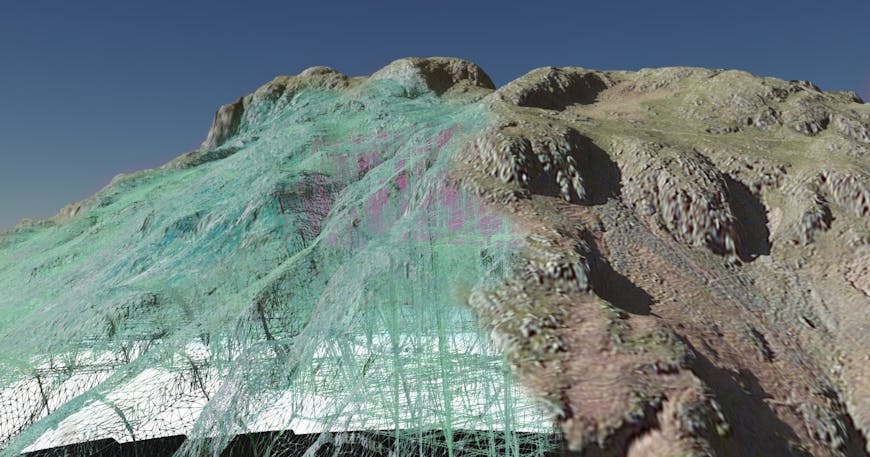Hello Cesium ion
On May 1, we will start to roll out the new commercial Cesium ion platform composed of web services and tools to complement CesiumJS’s visualization, creating a complete 3D mapping platform.
Over the next two months leading up to this, we will share our plans and progress with you, the Cesium community, who have inspired us with endless possibilities for 3D maps.

Our vision for ion includes subscriptions for
- 3D content, such as imagery, terrain, 3D tilesets, and glTF models curated from open data and commercial data providers;
- 3D tiling and hosting of your own massive datasets, such as imagery, terrain, photogrammetry, point clouds, BIM, CAD, 3D buildings, and vector data;
- Analytics, such as measurement tools, volume and visibility computations, and terrain profiles; and
- Map making and sharing workflows for creating 3D maps without coding.
ion includes years of tech that we have built and tested with customers through 3D Tiles Pioneers and other services. It is the piece of the ecosystem that brings CesiumJS from a JavaScript library to a complete 3D mapping platform.
The Cesium team is particularly excited about ion since it is our first product built around CesiumJS to support developing open-source CesiumJS; ion customers will help sustain and accelerate CesiumJS development. This open core business model is used by successful open-source companies such as Cloudera and Talend.
Cesium World Terrain

A sneak peek of ion is actually available today in the form of Cesium World Terrain, a new global terrain tileset with higher resolution terrain for Australia, England, New Zealand, and North America served by ion’s modern cloud architecture for efficient streaming into CesiumJS. This replaces the hosted STK World Terrain.
To see all the 3D content currently available from ion, including the 10–60 meter global Sentinel-2 imagery tileset, check out the assets examples in Sandcastle.
Pricing
ion accounts are free for non-commercial and non-government use and give you access to 3D content such as Cesium World Terrain as well as 5 GB of storage for cloud-based 3D tiling.
ion+ accounts allow commercial and government use, provide more storage for 3D tiling, and will have more analytics functionality over time. ion+ accounts will start at $149 a month for 50 GB of storage for cloud-based 3D tiling. Complete pricing information will be available with the May 1 release.
Starting with the Cesium 1.43 release today, Cesium contains a built-in ion account key free for non-commercial, commercial, and government use until September 1, 2018. So you can add Cesium World Terrain to your CesiumJS apps with the following code:
var viewer = new Cesium.Viewer('container', {
terrainProvider : Cesium.createWorldTerrain();
)});
On May 1, the initial ion release will roll out with the ability to create your own account and tile and host your own imagery and terrain in the cloud. Sign up at cesium.com to be the first to know.
In the future, ion will also be available as an enterprise version for on-premise customers and those who want to run ion’s 3D tiling pipeline in their own cloud.
CesiumJS and Cesium ion
With the introduction of ion, CesiumJS is, of course, still completely free and open source.
To clarify naming, we will now always refer to Cesium, the JavaScript library, as CesiumJS, a widely used nickname given our domain and Twitter user name. We now use Cesium as the umbrella brand for CesiumJS and Cesium ion. We expect folks will use Cesium and CesiumJS almost interchangeably, as is often the case with the runtime engine of 3D and map platforms.
CesiumJS uses open formats so your apps can ingest 3D content from ion, other services, or both. ion also serves open formats so you can use it with CesiumJS, other engines, or both.
What’s Next?
Sign up at cesium.com to get ready for the May 1 ion release and keep an eye on the blog for more updates!